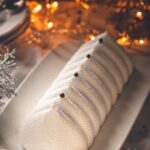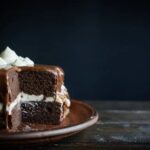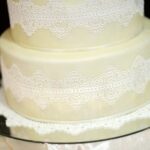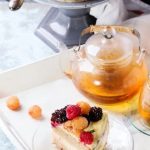Are you looking to learn how to use icing sugar to decorate a cake? Decorating a cake with icing sugar is an art form that can transform any ordinary dessert into a stunning centerpiece. From basic techniques to expert tips and creative inspirations, this guide covers everything you need to know about using icing sugar for cake decoration.
Icing sugar, also known as powdered sugar or confectioner’s sugar, is a versatile ingredient that can be used in various ways to decorate cakes. Whether you’re a beginner or an experienced baker, mastering the art of cake decorating with icing sugar can elevate your baked creations to the next level.
In this comprehensive guide, we’ll explore the basics of icing sugar and its uses in cake decorating, essential tools and supplies needed for working with icing sugar, step-by-step techniques for decorating a cake, expert advice for achieving stunning decorations, unique ideas for using icing sugar in cake decoration, common issues and troubleshooting tips when using icing sugar. So grab your apron and let’s get started on mastering the sweet art of cake decorating with icing sugar.
The Basics
When it comes to decorating cakes, icing sugar is a versatile and essential ingredient. Also known as powdered sugar or confectioner’s sugar, icing sugar is finely ground granulated sugar mixed with a small amount of cornstarch to prevent caking. It is commonly used in cake decorating to create a smooth and sweet finish on baked goods.
What Is Icing Sugar?
Icing sugar is made by milling granulated white sugar into a fine powder. The addition of cornstarch helps prevent clumping and ensures a smooth texture. This type of sugar is often used in frostings, glazes, and confections because it dissolves easily and provides a smooth consistency.
Uses in Cake Decorating
Icing sugar can be used in various ways to decorate cakes. It can be mixed with butter or cream cheese to create creamy frostings, sifted over cakes for a decorative dusting, or combined with water or other liquids to make fondant for intricate designs. When using icing sugar to decorate a cake, it can be utilized as an ingredient in the frosting itself or as a garnish for added sweetness and decoration.
Understanding the different uses of icing sugar and its versatility in cake decorating is essential for achieving professional-looking results. Whether you are making classic buttercream frosting, creating intricate designs with royal icing, or adding a simple dusting of powdered sugar for an elegant finish, mastering the art of using icing sugar will take your cake decorating skills to the next level.
Essential Tools
Pastry Bag and Piping Tips
One of the essential tools for using icing sugar in cake decoration is a pastry bag and piping tips. These tools allow you to create intricate designs and patterns on your cake with ease. When selecting piping tips, consider the different shapes and sizes available to achieve various decorations such as rosettes, shells, stars, and more.
Offset Spatula
An offset spatula is another must-have tool for using icing sugar to decorate a cake. This tool allows you to spread and smooth the icing evenly on the surface of the cake. It also helps in creating clean lines and edges for a polished finish.
Decorating Comb or Scraper
A decorating comb or scraper is essential for achieving textured frosting designs on your cake. These tools help in creating unique patterns and finishes that add visual interest to your cake. Whether you want a rustic look or a modern geometric design, a decorating comb or scraper can help you achieve it effortlessly.
When learning how to use icing sugar to decorate a cake, having these essential tools at your disposal will significantly enhance your decorating skills and allow you to create professional-looking cakes that are sure to impress.
Techniques
Icing sugar is a versatile tool for cake decorating, and mastering the right techniques can turn a simple cake into a work of art. Whether you’re a beginner or an experienced baker, using icing sugar to decorate cakes can take your creations to the next level.
To get started with using icing sugar to decorate your cakes, here are some step-by-step techniques to achieve stunning results:
- Prepare your icing: Start by making a smooth and creamy icing sugar mixture. You can use royal icing, buttercream, or fondant, depending on the design you want to achieve.
- Choose the right piping tip: Selecting the right piping tip for your design is crucial. A small round tip is perfect for writing or creating fine lines, while a star tip can be used for beautiful rosettes and borders.
- Practice piping: Before decorating your cake, practice piping on a flat surface to get comfortable with the pressure and movement required. This will help you create cleaner and more precise designs on your cake.
Once you’ve mastered these basic techniques, you can move on to more advanced methods such as creating intricate floral patterns, ombre effects, or using stencils to add unique designs to your cakes. With patience and practice, you’ll be able to use icing sugar to create professional-looking decorations that will impress everyone at your next event or celebration.
Tips and Tricks
When it comes to decorating a cake with icing sugar, there are some expert tips and tricks that can help you achieve stunning results. Whether you’re a beginner or an experienced baker, these tips will take your cake decorating skills to the next level.
Here are some expert advice for achieving stunning decorations with icing sugar:
1. Use the right consistency: The key to achieving beautiful decorations with icing sugar is to use the right consistency of icing. If the icing is too thick, it will be difficult to work with, and if it’s too thin, it won’t hold its shape. Aim for a smooth and spreadable consistency that holds its shape when piped.
2. Experiment with different piping techniques: There are numerous piping techniques that you can use to create intricate designs on your cakes. From simple swirls and rosettes to elaborate flowers and intricate patterns, experimenting with different piping techniques can add depth and dimension to your cake decorations.
3. Add texture and dimension: To add visual interest to your cake decorations, consider incorporating texture and dimension using icing sugar. You can achieve this by using tools such as combs, spatulas, or even stencils to create unique patterns and designs on the surface of the cake.
By following these expert tips and tricks, you can elevate your cake decorating skills and create stunning decorations using icing sugar.
Creative Inspirations
When it comes to using icing sugar to decorate a cake, there are countless creative and unique ideas that can take your cake decorating skills to the next level. From simple designs to intricate patterns, the possibilities are endless.
One popular technique is to use stencils with icing sugar to create beautiful and professional-looking designs on your cakes. Simply place the stencil over the cake and dust icing sugar over it, then carefully remove the stencil to reveal a stunning pattern.
Another creative inspiration for using icing sugar in cake decoration is to mix different colors of icing sugar together to create custom shades for your designs. This can add depth and dimension to your decorations, making them stand out even more. You can also use edible glitter or luster dust along with icing sugar to add a touch of sparkle and shimmer to your cakes.
For those looking for a more artistic approach, try using icing sugar to create freehand designs on your cakes. With just a small sifter or fine mesh sieve, you can sprinkle icing sugar onto the cake in any pattern or shape you desire. This allows for complete creative freedom and is a great way to personalize your cakes for any occasion.
Overall, the key is to experiment and have fun with different techniques and ideas when using icing sugar to decorate a cake. Whether you’re creating elegant designs or playful decorations, there’s no limit to what you can achieve with this versatile ingredient.
| Icing Sugar Technique | Description |
|---|---|
| Stenciling | Use stencils with icing sugar for professional-looking designs |
| Custom Colors | Mix different colors of icing sugar together for custom shades |
| Freehand Designs | Create unique designs by sprinkling icing sugar onto the cake freehand |
Troubleshooting
When using icing sugar to decorate a cake, there are common issues that may arise during the process. One of the most common problems is lumpy icing sugar, which can result in an uneven and unattractive decoration. To fix this issue, it is important to sift the icing sugar before using it. This will help remove any lumps and ensure a smooth and consistent texture for decorating the cake.
Another common issue when using icing sugar is thin or runny consistency, which can make it difficult to create defined decorations on the cake. To address this problem, you can add more icing sugar gradually until you reach the desired consistency. Alternatively, you can also use less liquid or add a thickening agent such as cornstarch to thicken the icing.
Decorating a cake with icing sugar may also result in colors that are not as vibrant as expected. To fix dull or faded colors, consider using gel food coloring instead of liquid food coloring, as it provides more intense and vibrant hues. Additionally, adding a small amount of white vinegar to the colored icing can help enhance its brightness.
| Common Issue | How to Fix It |
|---|---|
| Lumpy Icing Sugar | Sift the icing sugar before using it |
| Thin or Runny Consistency | Add more icing sugar gradually or use a thickening agent like cornstarch |
| Dull or Faded Colors | Use gel food coloring instead of liquid food coloring; add a small amount of white vinegar to enhance brightness. |
Conclusion
In conclusion, mastering the art of cake decorating with icing sugar is a delightful and rewarding skill that can elevate your desserts to a whole new level. Understanding the basics of icing sugar and its uses in cake decorating is essential to creating beautiful and delicious treats for any occasion. By utilizing the right tools, techniques, and expert advice, you can achieve stunning decorations that will impress your friends and family.
As you continue to practice and hone your skills, remember to stay creative and open to new ideas for using icing sugar in cake decoration. Whether you’re preparing for a special event or simply indulging in some baking therapy at home, there are endless possibilities for creating unique and eye-catching designs with icing sugar.
In the end, with patience, practice, and a willingness to troubleshoot common issues as they arise, you can confidently decorate cakes using icing sugar like a professional pastry chef. So go ahead – unleash your creativity, experiment with different techniques, and delight in the sweet art of cake decorating with icing sugar.
Frequently Asked Questions
Do You Put Powdered Sugar on Warm or Cool Cake?
Powdered sugar can be put on either a warm or cool cake, depending on the desired effect. Sprinkling it onto a warm cake can create a glaze-like effect as it melts, while adding it to a cooled cake will result in a powdery finish.
How Do You Stick Sugar Icing to a Cake?
To stick sugar icing to a cake, it’s important to ensure that the icing and the cake are at compatible temperatures. A slightly warmed icing can help it adhere better to a cooled cake, while a chilled cake may require room temperature icing for better adhesion.
How Do You Sprinkle Powdered Sugar on a Cake?
Sprinkling powdered sugar on a cake can be done using various methods. One common approach is to place the powdered sugar in a fine-mesh sieve or shaker and gently dust it over the cake. Another method is to use stencils to create decorative patterns with the powdered sugar on top of the cake.

Welcome to my blog about home and family. This blog is a place where I will share my thoughts, ideas, and experiences related to these important topics. I am a stay-at-home mom with two young children. I hope you enjoy reading it! and may find some helpful tips and ideas that will make your home and family life even better!





